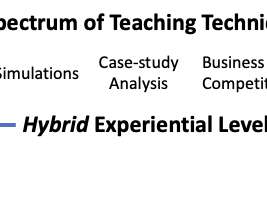Why Companies and Government Do “Innovation Theater” Instead of Actual Innovation
Steve Blank
OCTOBER 15, 2019
This article previously appeared in the Harvard Business Review. The type of disruption most companies and government agencies are facing is a once-in-every-few-centuries event. Disruption today is more than just changes in technology, or channel, or competitors – it’s all of them, all at once. Process Versus Product.



















Let's personalize your content